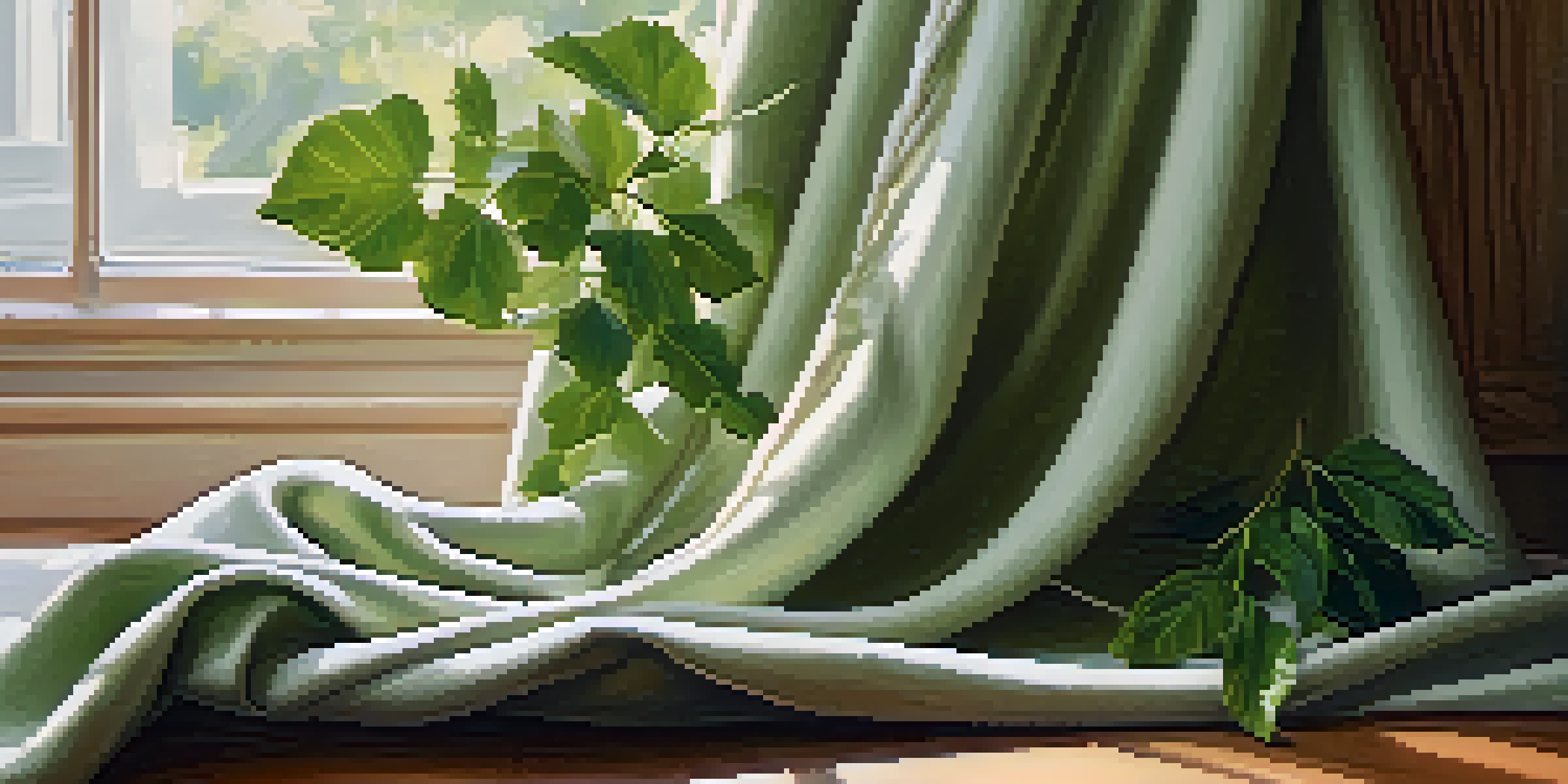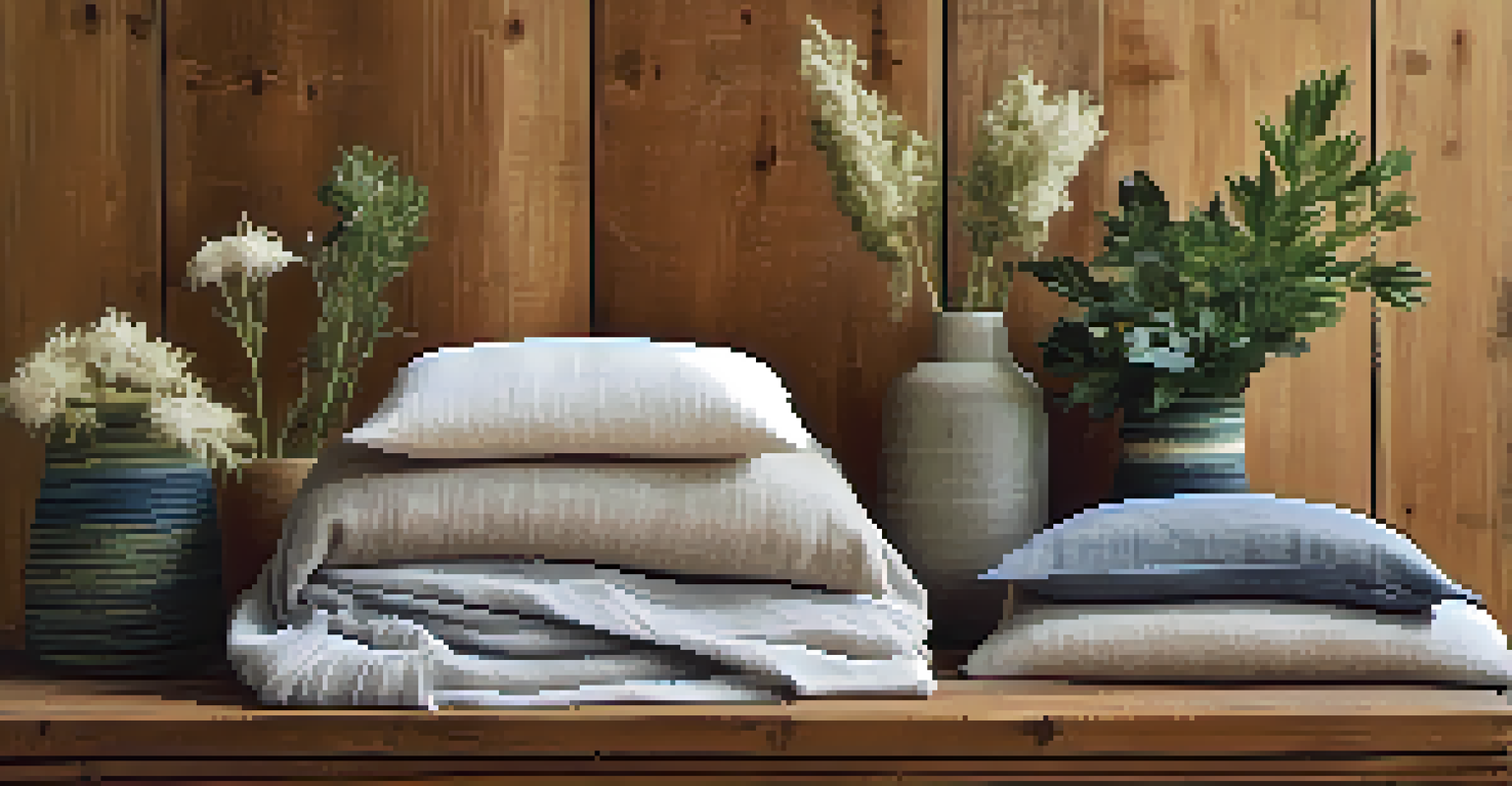Plant-Based Textiles: An Alternative to Synthetic Materials

What Are Plant-Based Textiles and Why They Matter
Plant-based textiles are materials derived from natural sources like cotton, hemp, and bamboo. Unlike synthetic textiles made from petroleum-based products, these sustainable alternatives are biodegradable and often require less energy to produce. As the world grapples with climate change and pollution, the shift towards plant-based textiles represents a crucial step in reducing our environmental footprint.
Fashion should be a form of escapism, and not a form of imprisonment.
One significant advantage of plant-based textiles is their ability to decompose naturally, unlike their synthetic counterparts, which can take hundreds of years to break down. This characteristic not only minimizes waste in landfills but also contributes to healthier soil and ecosystems. By choosing plant-based options, consumers can make a conscious decision that benefits both the planet and their wardrobes.
Moreover, the rise of plant-based textiles is fueled by growing consumer awareness and demand for ethical fashion. People are increasingly seeking products that align with their values, prompting brands to innovate and incorporate sustainable materials into their lines. This shift is not just a trend; it's a fundamental change in how we think about clothing and its impact on our world.
The Environmental Impact of Synthetic Textiles
Synthetic textiles, such as polyester and nylon, are derived from non-renewable resources, contributing to significant environmental issues. The production of these materials often involves harmful chemicals and processes that pollute air and water. Additionally, the microplastics shed from synthetic garments during washing pose a severe threat to aquatic life, making this an urgent issue that can't be ignored.

As consumers become more aware of these detrimental effects, there's a growing movement toward transparency in the fashion industry. Brands that rely heavily on synthetic materials are facing scrutiny from eco-conscious consumers. This shift in awareness is leading many companies to rethink their sourcing and production practices, paving the way for more sustainable options.
Plant-Based Textiles Are Eco-Friendly
These materials decompose naturally, reducing landfill waste and promoting healthier ecosystems.
By understanding the environmental impact of synthetic textiles, consumers can make more informed choices. Supporting brands that prioritize sustainability not only encourages ethical practices but also promotes the growth of plant-based alternatives, helping to create a more eco-friendly fashion landscape.
Benefits of Plant-Based Textiles for Consumers
Plant-based textiles offer numerous benefits for consumers, starting with their comfort and breathability. Materials like cotton and bamboo are naturally soft and often hypoallergenic, making them ideal choices for individuals with sensitive skin. This comfort factor, combined with their aesthetic appeal, is why many people are making the switch to plant-based materials.
The future will be green, or not at all.
Moreover, plant-based textiles often have a smaller carbon footprint compared to synthetic options. The cultivation of these crops, especially when done sustainably, can contribute positively to the environment by improving soil health and promoting biodiversity. This means that when you choose plant-based fabrics, you're not just opting for comfort; you're also making a choice that supports a healthier planet.
In addition to comfort and sustainability, there’s a growing range of stylish plant-based textiles available on the market. From chic dresses made from hemp to cozy sweaters crafted from organic cotton, consumers can now enjoy a wide array of fashionable choices. This variety allows individuals to express their personal style while making eco-friendly decisions.
Innovations in Plant-Based Textile Production
The textile industry is witnessing exciting innovations in plant-based materials, with companies exploring new ways to create fabrics from unconventional sources. For instance, some brands are developing textiles from agricultural waste, such as pineapple leaves or orange peels. This not only reduces waste but also adds a unique twist to sustainable fashion.
Another fascinating development is the emergence of lab-grown fibers derived from plant cells. These fibers mimic the properties of traditional textiles while minimizing environmental impact during production. By leveraging technology, the fashion industry is opening up new possibilities for sustainable materials, making it easier for consumers to choose eco-friendly options.
Consumer Demand Drives Change
Growing awareness of sustainability is pushing brands to adopt plant-based textiles and ethical practices.
These innovations highlight the potential for plant-based textiles to revolutionize the fashion industry. As more companies invest in research and development, we can expect to see a wider range of sustainable fabrics that cater to diverse consumer preferences, ultimately leading to a more sustainable future.
Challenges Facing Plant-Based Textiles
Despite their many benefits, plant-based textiles face several challenges in gaining widespread adoption. One major hurdle is the perception that these materials are less durable than synthetic options. While advancements in technology are improving the quality of plant-based fabrics, educating consumers about their longevity and care is essential.
Additionally, the production of plant-based textiles can be resource-intensive, particularly in terms of water usage for crops like cotton. Sustainable practices and innovations, such as rain-fed farming and organic cultivation, are crucial to mitigating these challenges. By embracing responsible sourcing and production methods, the industry can minimize its impact on water resources.
Finally, price can be a barrier for some consumers. Plant-based textiles often come with a higher price tag due to the more sustainable production processes involved. However, as demand increases and production scales up, we can hope to see prices become more competitive, making these eco-friendly options accessible to a broader audience.
How to Transition to Plant-Based Textiles
Transitioning to plant-based textiles doesn't have to be an overwhelming process. Start by examining your wardrobe and identifying pieces that are made from synthetic materials. Gradually replace these items with plant-based alternatives, focusing on essential pieces like t-shirts, jeans, or activewear that you wear frequently.
When shopping for new clothing, look for labels that specify organic or sustainably sourced materials. Many brands are now transparent about their sourcing practices, making it easier for consumers to choose responsibly. Additionally, consider shopping second-hand or from brands that prioritize sustainability, which often include plant-based options.
Innovations Enhance Plant-Based Fabrics
New technologies are creating sustainable options from unconventional sources, expanding choices for consumers.
It's also important to educate yourself about the different types of plant-based textiles available. Knowing the benefits of materials like Tencel, linen, or organic cotton can empower you to make informed choices. By taking small steps and making conscious decisions, you can gradually build a more sustainable wardrobe that reflects your values.
The Future of Plant-Based Textiles in Fashion
The future of plant-based textiles looks promising as more consumers and brands recognize the importance of sustainability. As environmental concerns continue to rise, the demand for eco-friendly options is likely to grow, pushing the fashion industry towards more innovative practices. This shift presents an opportunity for brands to differentiate themselves in a crowded market by prioritizing sustainable materials.
Moreover, the integration of technology in fashion is paving the way for new developments in plant-based textiles. From creating biodegradable synthetic alternatives to enhancing the durability of natural fibers, these innovations could transform how we perceive and use textiles in the future. The possibilities are endless as researchers and designers collaborate to create more sustainable solutions.

Ultimately, the success of plant-based textiles will depend on consumer education and advocacy. As more people become aware of the benefits and potential of these materials, they can drive demand and influence industry practices. By embracing this change, we can look forward to a fashion landscape that values sustainability and prioritizes the health of our planet.